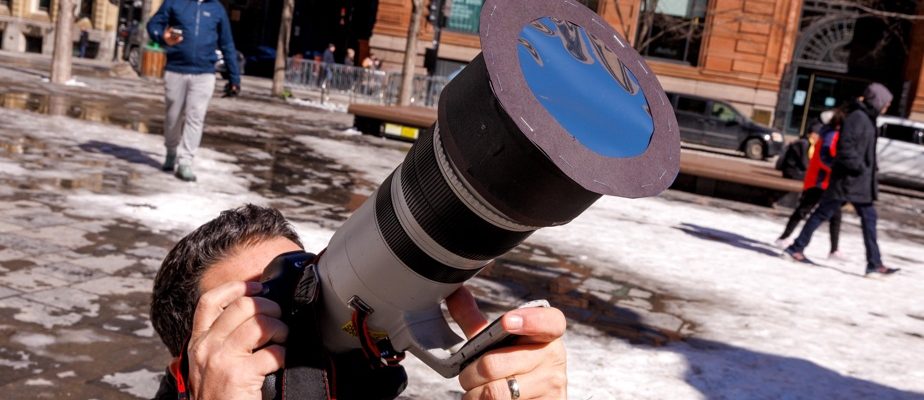A total eclipse! I absolutely have to immortalize this moment with my camera. What time should I press the shutter button?
It depends on what you want to immortalize, exactly. Because unless you’re equipped with a good telephoto lens, all the mechanical and computer hardware, and the passion that drives amateur astronomers, you might want to point your lens somewhere other than the Sun.
“The first piece of advice I could give, even if it seems counterintuitive, is to resist the idea of trying to take photos,” says filmmaker and astronomer Sébastien Gauthier. Not so much because it is dangerous for oneself or for the camera, but above all because it is very difficult to take an eclipse photograph which will rival the photographs of specialists, or which will bear witness to what we really have. seen. » And since it won’t last more than one to three minutes, depending on where you are, it would be a shame to waste this precious time behind a camera lens… “It goes by so quickly that my advice would be rather concentrate on observing the eclipse rather than trying to take a photo of it,” says Sébastien Gauthier.
But it will be a spectacular image! A black ball surrounded by fire!
A black marble, yes, which we can even admire with the naked eye during the total eclipse phase. But since it won’t be very big in the afternoon sky, it will be even less big on the phone screen. “Have you ever used your cell phone to photograph the Moon? And have you noticed that it appears as a small white dot on the screen? Well, it’s going to do the same thing during the eclipse,” says Sébastien Gauthier. Hence the usefulness of having a telephoto lens powerful enough to capture all the details of this superposition of distant stars.
So what experts advise is not to take a photo at all.
No, not necessarily! But there are other things than the Sun to immortalize around you.
Accelerated video: by placing your device on a stable surface, such as on a tripod, you can film an accelerated video (time lapse) which will bear witness to the drop in brightness around you (in your garden, in front of the house, on the landscape, etc.) when the Moon hides the Sun. “If we start the time-lapse video 5 minutes before the totality of the eclipse, and we shoot for 10-15 minutes, it will give a spectacular short video,” says Sébastien Gauthier.
The Sun through the holes: by observing the light of the Sun filtering through a hole, we will see the circle being obscured as the Moon moves forward in the axis of the Sun. “One thing people do is take a metal strainer and reflect light off the floor, or off a wall. This projects a multitude of small eclipses. »
All right. But if I want to take a photo of the Sun, is it dangerous for my equipment or for my eyes?
In this case, there are indeed two safety elements to take into account when the Sun is not completely obscured by the Moon.
Eyes: Looking directly at the partially obscured Sun, without proper protective eyewear, can cause irreparable damage to the retina. This is also true if we look at the Sun through the lens of a device, such as a camera, telescope or binoculars, that does not have a suitable filter.
Equipment: “Generally, camera manufacturers do not recommend pointing the camera towards the Sun for very long,” says Sébastien Gauthier. Taking a photo in which the Sun appears does not automatically ruin the camera (fortunately!), but pointing the lens towards the sky for three hours, without a protective filter, is certainly not a wise idea to preserve your sensor. .. “To photograph the partial phases of the eclipse, you have to put a solar filter on your lens,” recalls Sébastien Gauthier. This filter, similar to that of certified sunglasses, can be purchased in sheets in specialized stores and must be cut to cover the camera lens (see another screen on the preparation of our photographer Martin Chamberland). For small cameras, such as those on phones, a filter the size of an eclipse telescope may be sufficient if it covers the surface of the lens.
